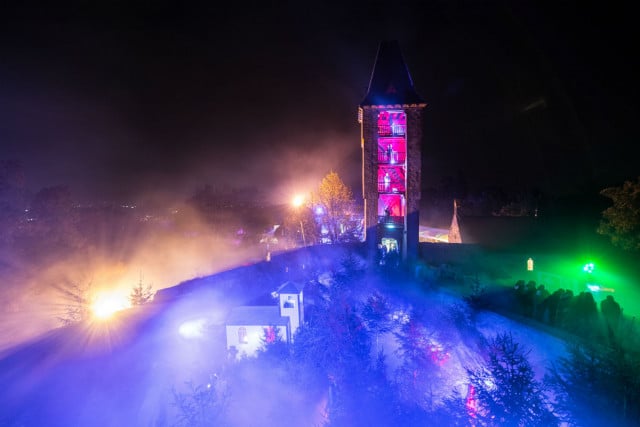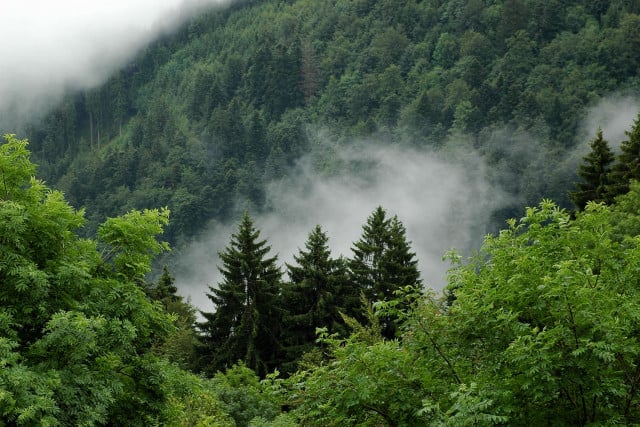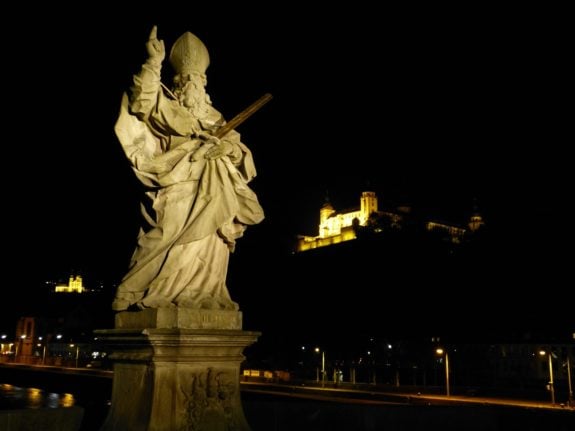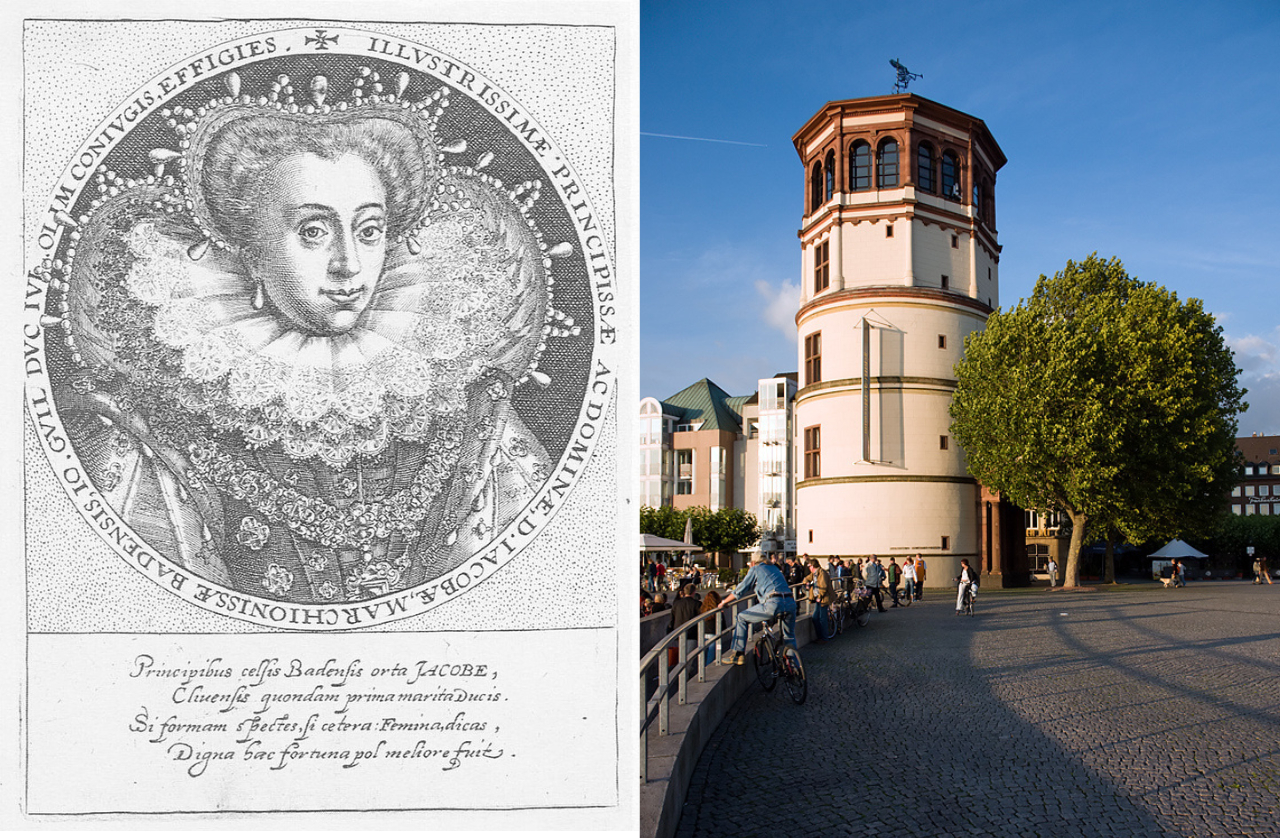Halloween is nigh, and the commercialized world is in the grips of spooky pumpkins, horror films and children dressed as vampires. Germany doesn’t go quite as wild for the holiday as the United States (although who does?), but it has its fair share of creepy castles and freaky forests.
From Berlin to Bavaria, we’ve taken a look at eight of the country’s scariest locations.
Zitadelle, Berlin
The citadel in Spandau is allegedly home a Weiβe Frau (white woman) who haunts its halls. In the 16th century, the citadel was used as a prison, and into it was thrown Anna Sydow, former lover of Joachim II, Elector of Brandenburg. On his deathbed, Joachim asked his son, Johann Georg, to look after Anna, but Johann Georg went against his father’s wishes and imprisoned Anna until her death in 1575.
Anna’s spectre, the Weiβe Frau, is first said to have made an appearance in 1598, just a week before Johann Georg’s death.
When the Berlin City Palace was under reconstruction in 1709, a female skeleton was discovered. This was assumed to be the Weiβe Frau’s and was formally buried in the hope of allowing the ghost to rest in peace.
The White House, Dieburg, southern Hesse
In a forest in southern Hesse is a dilapidated white house, which is the home of a tragic legend. It is said that this house was the home of a forester and his family. One day when the forester was out hunting, he shot what he thought was a deer. But it turned out to be his son. Out of desperation and despair, the parents killed themselves. Legend has it that their troubled spirits walk about the forest at night, unable to find peace.
Burg Frankenstein, Darmstadt

Halloween party at Burg Frankenstein. It didn't look like this in Mary Shelley's time. Photo: DPA.
Frankenstein Castle in the Odenwald has long been associated with spooky stories. It is notorious for possibly serving as an inspiration for Mary Shelley’s classic Frankenstein. The castle once housed Johann Conrad Dippel, who was born in the castle in 1673. He became its alchemist and created Dippel’s Oil, which was said to be like an ‘elixir of life’. There were also rumours that Dippel experimented with cadavers at the castle and tried to bring them back to life; a local cleric is even said to have warned his parish that the alchemist had created a monster brought to life with a bolt of lightning.
Although the English author Mary Shelley never explicitly referred to this legend, she travelled through the region a few years before writing Frankenstein. Moreover, the Brothers Grimm are said to have relayed the legend of Dippel to Shelley’s stepmother, who translated fairy tales into English.
Although it’s unlikely that anybody is experimenting on dead bodies at the castle today, it is home to one of Germany’s largest Halloween parties. Its location, on a hilltop in a cloudy, leafy forest is perhaps the perfect setting for a spooky party.
Die Karlsteine, Osnabrück
It is thought that, in ancient times, Osnabrück was the location of a large pagan temple and burial site. When Charlemagne tried to convert the German peoples to Christianity, his forces carried out a massacre at the site, in which they slaughtered the priests and desecrated the graves. It is also rumoured that Charlemagne himself snapped the largest altar stone to demonstrate the power of Christianity over pagan gods. The name Karlsteine means The Stones of Charlemagne.
It’s also claimed that the massacre still lingers over the site; during the summer equinox and the winter solstice, stories suggest that you can see strange orbs of light, hear screams and see stains on the stones.
Kirchlengern Forest
Quite near to Osnabrück is Kirchlengern Forest, which has been scaring visitors for centuries. Since the 12th century there have been stories of mysterious hauntings there. People walking through the forest report feelings of unease and being watched
There are also stories of animals from local towns disappearing, only to be found dead in the forest, their blood and fur strewn around.
It’s probably not the place to take your dog walking late at night.

Halloween can be very scary. Photo: DPA.
Kloster Unterzell, Würzburg
The former abbey in Bavaria is said to be haunted by the ghost of Maria Renata Singer von Mossau, one of the last women to be charged and executed for witchcraft in Germany.
In 1746, several nuns in the convent reportedly suffered from attacks of hysteria, which were explained as the nuns being possessed by demons. Maria Renata was accused of heresy and satanism, and strange ointments and robes were discovered in her room. She admitted to the charges and was executed then burned in June 1749.
Reports claim that you can still see her ghost wandering through the abbey’s halls.
Wolfsegg Castle, Bavaria
Wolfsegg Castle has a long history of hauntings. In the 16th century, the castle was the home of Klara von Helfenstein and her husband Ulrich von Laaber. But Ulrich was a knight and so often away from home. Klara in turn started having an affair with Georg Moller, who happened to be Ulrich’s archenemy. On uncovering the affair, Ulrich ordered two young farmers to murder his unfaithful wife, but soon after, Ulrich and his sons also died.
Some say they were murdered by Georg as an act of revenge. But it is also claimed that they were killed by the ghost of Klara herself, which now restlessly haunts the castle as a Weiβe Frau.
The Black Forest

The Black Forest has inspired many German myths. Photo: Depositphotos/ChiPhoto
One of Germany’s most alluring tourist attractions, the Schwarzwald has served as inspiration for many German myths and legends. It served as the setting for many of the Brothers Grimm’s tales, and legend has it that the forest is populated with sorcerers, witches, dwarves and werewolves.
One of the scariest legends is that of Der Groβmann, a very tall, slender man with bulging white eyes. It is said that he would chase bad children who crept into the forest until they confessed their sins. Allegedly, some of the worst children disappeared.
This is almost certainly a tale made up to scare children from being naughty, but it definitely heightens the forest’s sense of spooky mysticism.





 Please whitelist us to continue reading.
Please whitelist us to continue reading.
Member comments